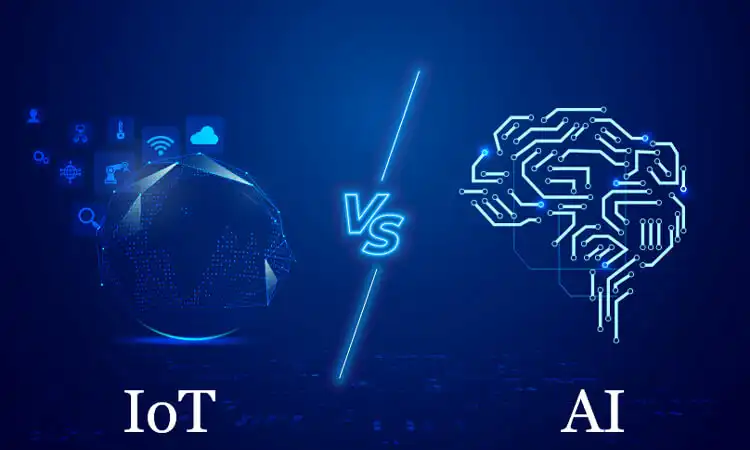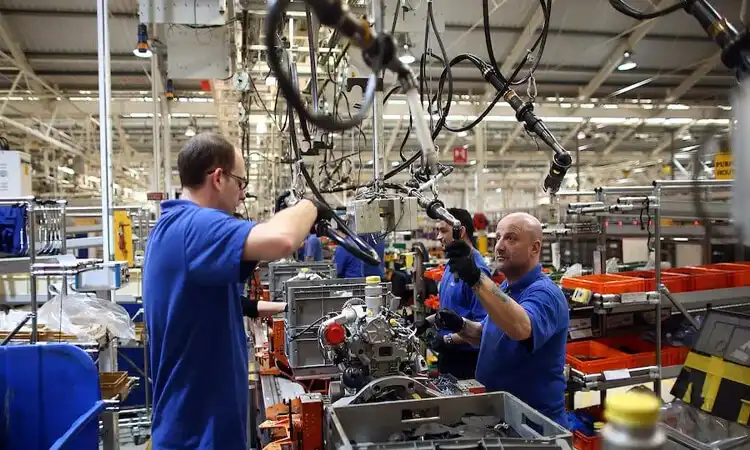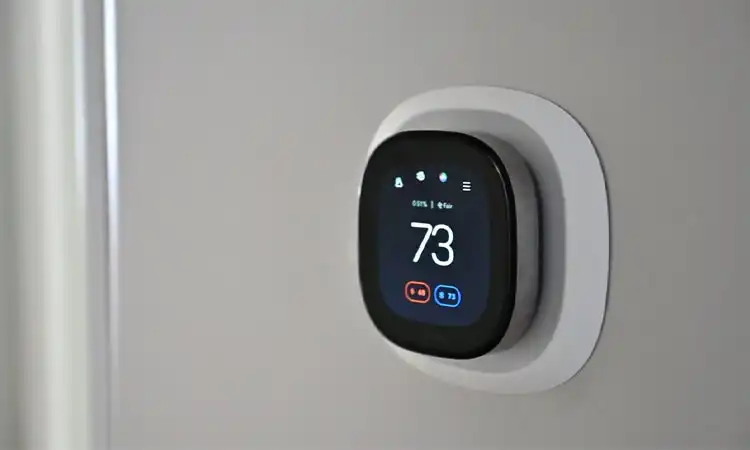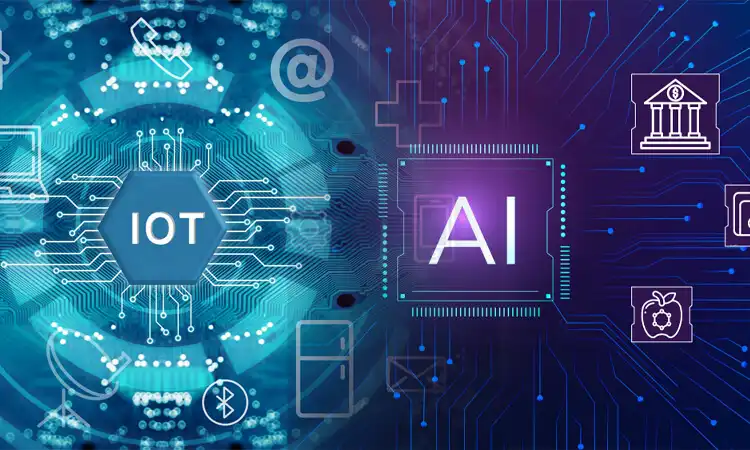Artificial Intelligence (AI) and the Internet of Things (IoT) are two cutting-edge technologies that are driving innovation and shaping the future. They are powerful on their own. However, the convergence of these two technologies can unleash a whole new level of innovation and value creation. AI and IoT are a perfect match. This is because AI can analyze massive amounts of data while IoT can connect devices and sensors. Together, they offer unprecedented opportunities to create new products, services, and business models. The possibilities are endless, from smart homes to smart cities and healthcare transportation. This blog will explore AI and IoT convergence, why it matters, and what you need to know to stay ahead of the curve.
Understanding AI and IoT Convergence
Exploring AI Technology
AI refers to developing computer systems that can perform tasks requiring human intelligence. It encompasses machine learning, natural language processing, computer vision, and more. AI enables machines to learn from data, adapt, and make informed decisions.
Introduction to IoT
IoT involves connecting physical objects, devices, and sensors to the internet. These enable them to collect and exchange data. This interconnected ecosystem allows for seamless communication, automation, and data-driven insights. IoT applications spanning across smart homes, industrial automation, healthcare, transportation, and more.
Convergence of AI and IoT
The convergence of AI and IoT brings together the power of intelligent algorithms and vast amounts of data from interconnected devices. By combining AI capabilities with IoT infrastructure, organizations can unlock new efficiency, productivity, and innovation levels. This convergence opens doors to enhanced decision-making, predictive analytics, automation, and personalized experiences.
The Growing Popularity of the IoT and AI
AI and IoT are popular technologies for gaining a competitive advantage. According to a recent Tech Trend survey by SADA System, AI, and IoT are currently the technologies most used today. The report also found that firms heavily invest in IoT and AI. They do this to boost efficiency and improve their bottom lines.

The IBM study also emphasizes the importance of IoT and AI in transforming businesses. The research interviewed top executives, revealing that 19% of high-performing companies are “Reinventors” actively leveraging the benefits of integrated IoT and AI. These leaders recognize that digitizing interactions and communications are crucial for reimagining their enterprises.
Both startups and large, established firms are increasingly embracing AI to maximize the potential of IoT. Leading IoT platform providers like Oracle, Microsoft, Amazon, and Salesforce have started integrating AI features into their IoT applications and platforms. This integration paves the way for even more advanced capabilities. As IoT and AI integration’s momentum grows, companies embracing these technologies will be best positioned for success in the digital age.
How AI Unlocks the Full Potential of IoT
IoT itself collects streams of data through internet-connected sensors embedded in machines. At its core, IoT follows the progression of sensing, aggregating, analyzing, and acting. Undoubtedly, the value and outcomes heavily depend on the analysis and insights. This is where AI plays a crucial role in maximizing IoT’s potential.
IoT generates petabytes of data, and AI enables companies to gain meaningful insights and uncover patterns from this data. These insights empower intelligent decision-making. AI analyzes vast amounts of data from IoT sensors, allowing businesses to optimize processes and personalize experiences. AI also facilitates the development of innovative solutions and improves business results.
Working together, AI and IoT achieve agile and impactful capabilities, including:
- Harvesting and analyzing massive amounts of data to gain key insights.
- Enabling fast, accurate, and data-driven analysis and decision-making.
- Balancing localized versus centralized intelligence needs.
- Personalizing experiences while ensuring privacy, security, and confidentiality.
- Strengthening security and defending against potential cyber threats.
These combined capabilities of AI and IoT drive digital transformation, enhance operational efficiency, and create new business opportunities across industries.
Unlocking Potential and Transforming Business with IoT and AI
IoT and AI together transform businesses. They do this by unlocking new possibilities and optimizing key metrics. These technologies deliver unprecedented insights, intelligent automation, improved scalability, and reduced costs.

Gain Actionable Insights
AI analyzes massive amounts of data from IoT sensors. It detects patterns to gain deep insights into processes and risks. AI also detects patterns to gain deep insights into customer needs and more. Machine learning helps predict outcomes and optimize key metrics. Intelligent IoT provides a window into how systems and equipment work. It reveals wasted effort and inefficiencies. It also reveals paths for improvement.
For example, Google uses IoT and AI to gain insights into how to lower cooling costs in data centers by up to 30%.
Manage Risks Proactively
By integrating IoT and AI, businesses can better track risks across finance. They can also better track risks across cyber threats, employee safety, and operational issues. Predictions based on this data can help businesses address these risks more effectively. Businesses can improve their overall performance as a result. They can also reduce the likelihood of negative outcomes. AI helps analyze data from connected devices. This enables businesses to spot patterns before they become bigger problems. Issues can be addressed through proactive intervention and risk mitigation.
For instance, Fujitsu ensures worker safety. It does this by using AI to analyze data from wearables and predict high-risk situations. Workers are alerted to potential dangers, avoiding injury and costly legal/reputational damage.
Innovate Faster
AI and IoT work together to gain key insights from vast amounts of data rapidly. This enables the development of breakthrough new products. It also enables the development of breakthrough new services and solutions. The integration of these technologies is driving innovation and growth across industries. NLP allows AI to understand IoT data and provide feedback to improve systems quickly. Insights turn into innovations that delight customers and gain a competitive edge.
For example, Rolls Royce uses AI and IoT for the predictive maintenance of airplane engines. AI analyzes sensor data. This enables it to detect issues early. AI then provides recommendations to optimize repair scheduling and lower total maintenance costs. These benefits make AI a valuable tool for businesses looking to improve their operations.
Improve Scalability and Uptime
While IoT connects billions of devices, many IoT ecosystems rely on low-cost sensors that generate huge amounts of data. AI analyzes this data and summarizes key insights before transferring them between devices. This reduces dimensions while empowering connections between far more IoT endpoints. Scalability is improved along with equipment uptime.
For instance, Deloitte achieved 20-50% less planning time, 10-20% higher availability, and 5-10% lower costs. They achieved this by using AI for predictive maintenance. This was done across industrial environments with many connected assets. As a result, they experienced fewer unplanned outages.
Challenges of IoT Integration in AI
IoT and AI promise significant benefits. However, their combination also introduces complexity and limitations that must be addressed. Key challenges include:
Privacy and Security
Privacy and security risks increase as more devices connect and share data to enable AI. Vulnerabilities emerge for leaks, hacking, surveillance, and more. Extra layers of protection are needed to safeguard sensitive data and user privacy.
Data Overload
Organizations will struggle with the huge volumes of data from countless connected IoT devices. Proper data management, governance, lakes, warehouses, and analytics become imperative but difficult. Without intuitive systems to organize information, data overload can cripple businesses.
Bugs and Glitches
If one IoT device has an issue, many or all connected devices likely will too. Bugs, errors, downtime, and other problems can spread rapidly across networks. This can disrupt systems and customers. Rigorous testing is required before large-scale IoT deployments.
Interoperability Challenges
There are no universal standards for IoT compatibility and interoperability. This makes it difficult to connect various devices. They often cannot communicate, share or use data and insights effectively despite being part of the “Internet of Things.” Standards need to emerge to realize the full potential of IoT networks.
Resources and Expertise
Combining AI and IoT requires specialized knowledge, skills, tools, and personnel. Both technologies are complex, and integration makes them more so. Many organizations struggle with limited resources, budgets, and available talent with relevant expertise.
AI and IoT: Delivering Transformative Solutions and Experiences
Manufacturing
Manufacturing has widely adopted technologies like IoT, AI, facial recognition, and deep learning. Robotics are also widely adopted in manufacturing. Robots with sensors that provide data can learn over time. This can save costs and improve processes with the help of AI algorithms.

For example, factories are streamlining production by employing smarter robots. Robots analyze huge amounts of sensor data. This enables them to optimize assembly processes and reduce waste and rework. They also ensure high-quality standards and predict maintenance needs. Productivity, quality, and efficiency are enhanced through intelligent automation.
Self-Driving Cars
Tesla’s autonomous vehicles show the power of AI and IoT integration. AI predicts pedestrian and vehicle behavior in various conditions. It does this by determining road status, weather, optimal speed, and more from IoT sensors. These predictions can improve safety and help prevent accidents. The vehicles learn and improve over time with each trip.

Retail Analytics
Retail analytics combines data from cameras, sensors, and AI. This allows businesses to observe customer movements. Predictions based on this data can help determine checkout times. These predictions can suggest staffing levels. This is done to reduce wait times and increase cashier productivity. Retail analytics is a valuable tool for improving the customer experience.
Smart Thermostats
Nest’s smart thermostats integrate IoT and AI. The thermostats can be controlled remotely via smartphone, checking schedules and temperature preferences. AI analyzes data from IoT sensors to optimize energy usage, comfort, and cost savings.

IoT and AI combined can unlock innovative solutions and transform experiences. This goes beyond the examples mentioned earlier. To maximize value from IoT networks and reinvent business models, integrate AI with IoT device data.
Some potential benefits include:
- Improved operational efficiency, productivity, and cost optimization.
- Enhanced safety, quality, accuracy, and reduced waste.
- Personalized experiences, recommendations, and predictive analytics.
- New intelligent automation, robotic process automation, and autonomous systems.
- Innovative new products, services, and business models.
- Improved scalability, flexibility, manageability, and uptime.
- Transforming industries from manufacturing to healthcare, smart cities, finance, and more.
The Future Is Here: How AI and IoT Are Transforming Everything
AI and IoT are transformative technologies that reinvent industries and optimize businesses. They enable intelligent automation and predictive solutions that enrich people’s lives.
AI and IoT work together to analyze data from IoT networks and sensors. This optimization reduces waste, minimizes costs, and improves performance, quality, and profitability. Automation handles mundane tasks while important work is enhanced and scaled.
With IoT and AI, companies gain unprecedented insights into customers and behaviors. AI builds a 360-degree view of key metrics, relationships, experiences, and more. Personalized content, recommendations, and services follow. Deep customer understanding leads to engagement.
IoT and AI make predictive analytics a reality. They analyze data to forecast key business metrics, optimize KPIs, reduce risks, and drive better decisions. Predictive analytics provides a glimpse into the future. This allows businesses to adapt quickly and take advantage of new opportunities.
Together, IoT and AI cultivate continuous innovation and business model transformation. AI empowers rapid experimentation and progress, developing innovative new IoT products and solutions. This results in business model transformation and long-term, sustainable growth.
The convergence of AI and IoT is a game-changer for businesses and individuals. We can improve decision-making, increase efficiency, and drive innovation. This is achieved by leveraging the power of these technologies. As we continue to explore new applications and best practices, the possibilities for IoT and AI convergence are endless. Stay informed and stay ahead of the curve to make the most of this exciting development.
Related Articles:
About IoT and AI FAQs
-
How is IoT related to AI?
IoT and AI are related. They can be combined to create powerful solutions that enable businesses to gain insights. These insights help businesses make intelligent decisions based on vast amounts of data from connected devices.
-
What does IoT stand for in AI?
In AI, IoT stands for the Internet of Things. The Internet of Things refers to the network of physical devices embedded with sensors and software. These technologies enable the devices to connect and exchange data with each other and with other systems.
-
Can IoT work without AI?
Yes, IoT can work without AI. However, AI can enhance the capabilities of IoT. AI does this by providing predictive insights based on the data collected from connected devices. AI also enables intelligent decision-making based on this data.
-
How is AI going to revolutionize IoT?
AI is set to revolutionize IoT. It does this by enabling businesses to gain deeper insights from vast amounts of data collected from connected devices. AI can be used to detect patterns. It can also predict maintenance needs and optimize processes, among other things.
-
Is Alexa an IoT device?
Yes, Alexa is an IoT device. It is a voice-activated virtual assistant. Alexa is part of Amazon’s ecosystem of smart home devices. These devices are designed to be controlled and monitored using the internet.








